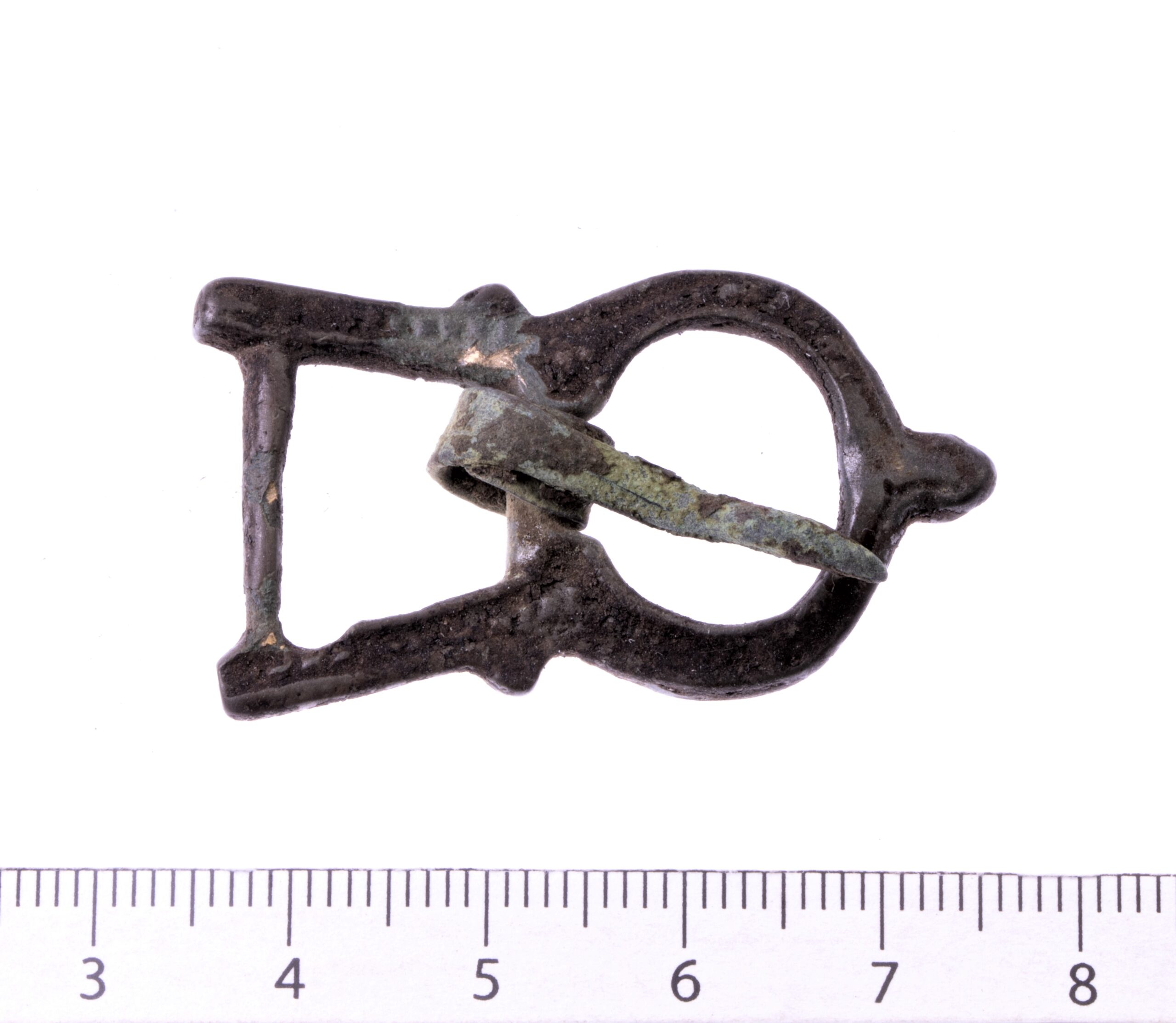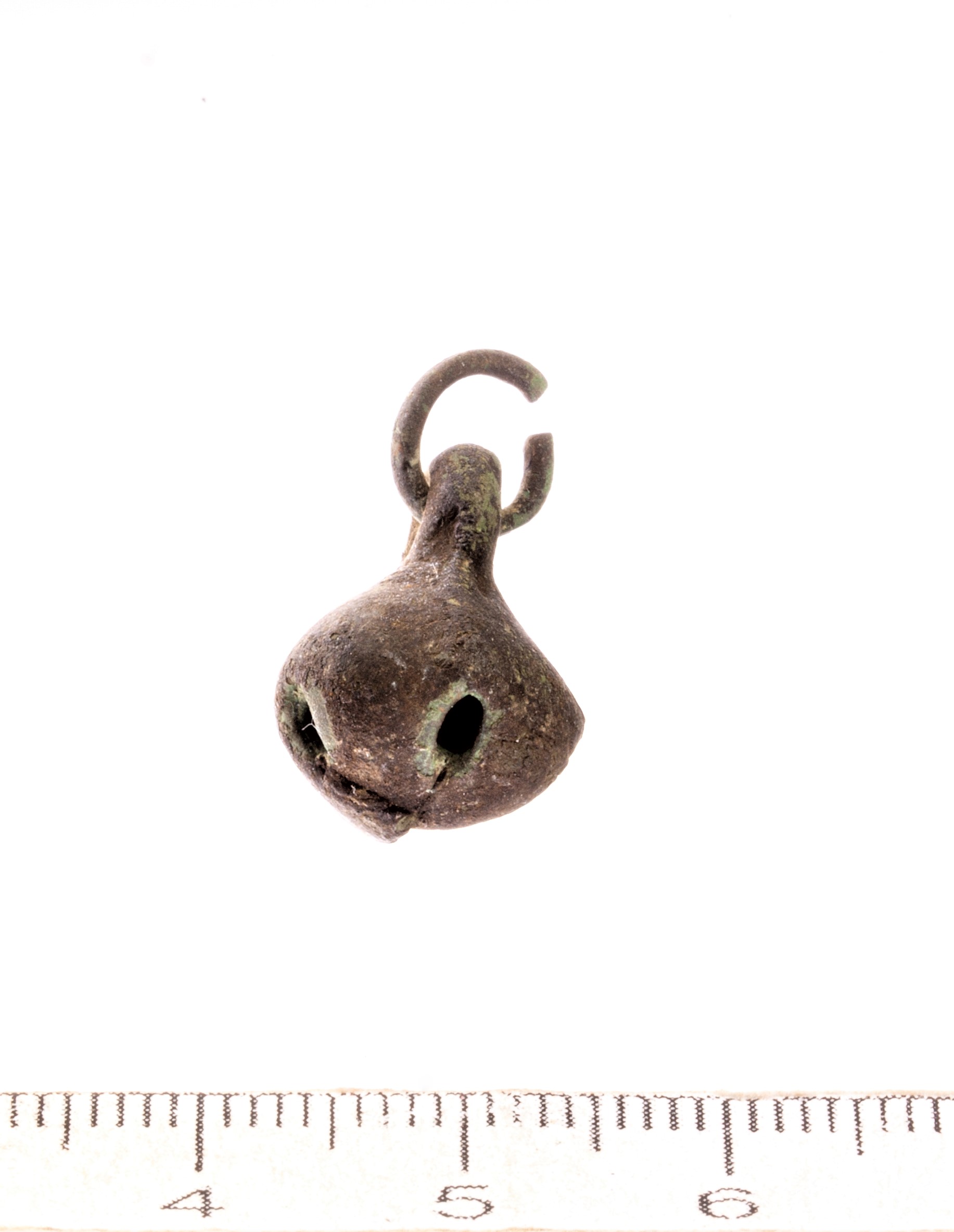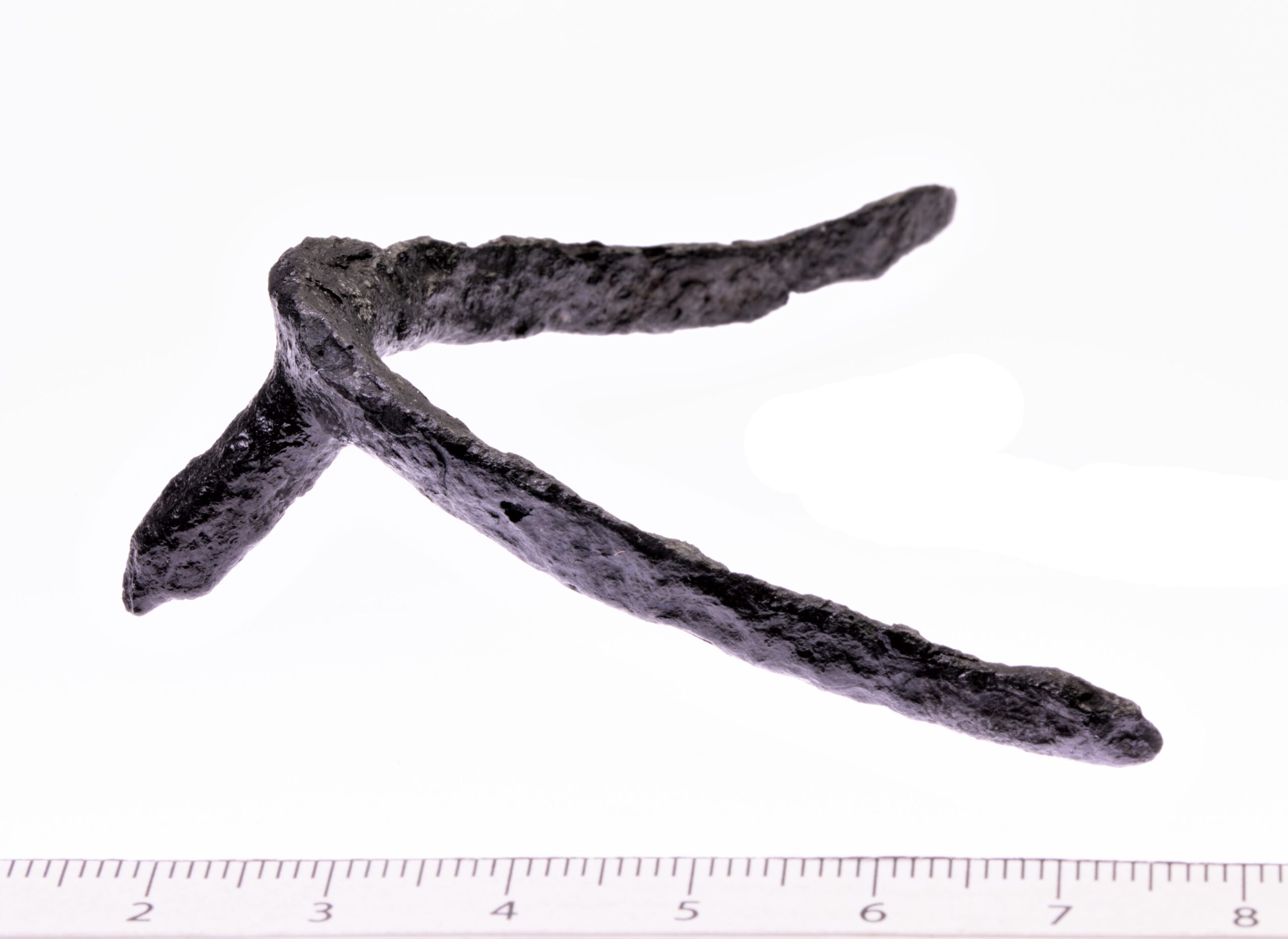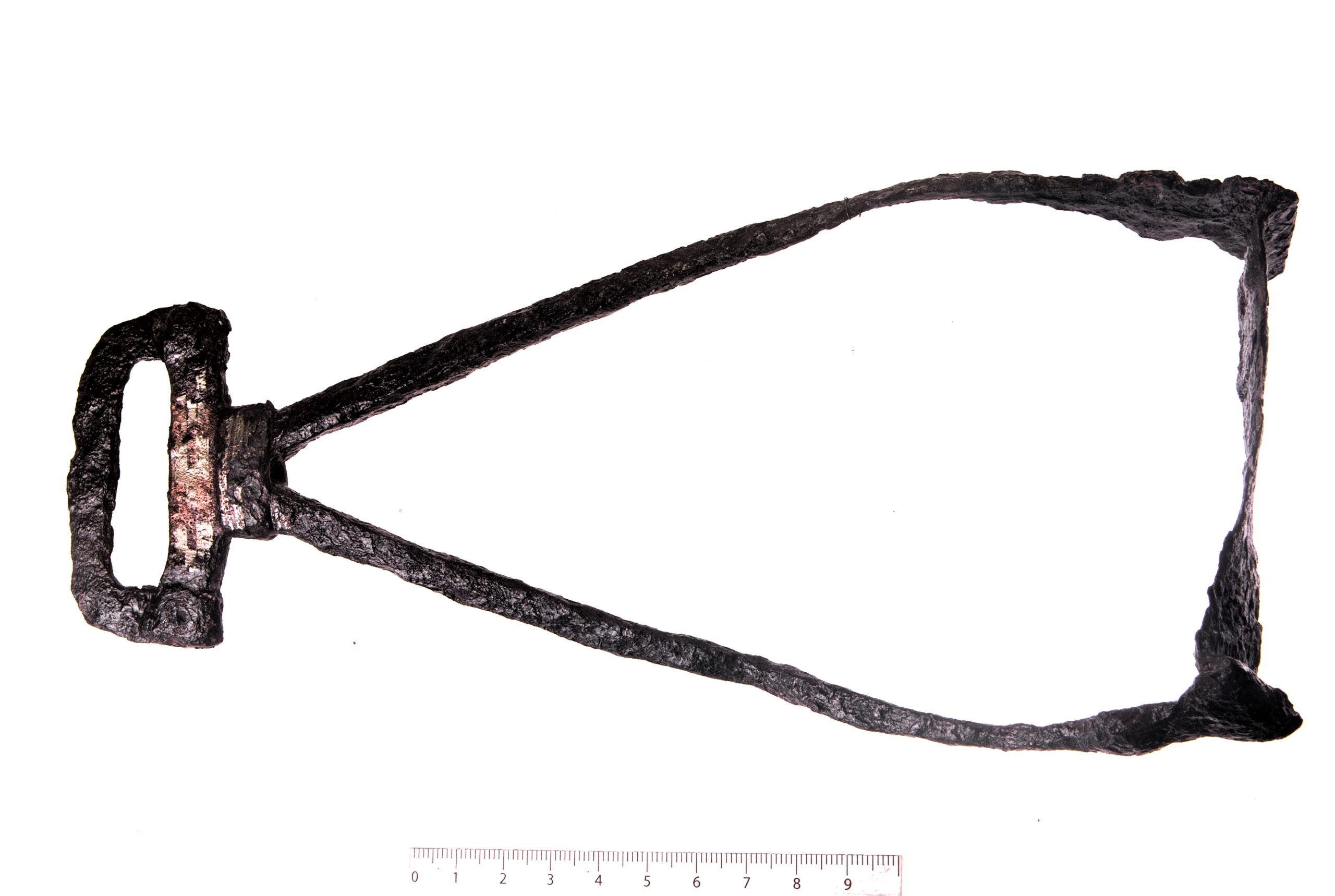Database
Our database is free to use for all history and archaeology enthusiasts. If you use our database, please do not forget to cite correctly:
Mägi, Marika; Palm, Piia Sandra. Archaeological Artefacts of Saaremaa. Foundation Osiliana / Tallinn University. Accessed: date.
The Osiliana Archaeological Database presents artefacts from Saaremaa and the surrounding small islands.
The database contains mainly Iron Age and Medieval finds that can be classified.
Undated metal or other pieces were generally excluded from the database.
Ceramics are represented by isolated examples.
The database is a work in progress and is constantly being updated.
Mullutu
Gotlandic-Baltic type buckle, silver or lead.
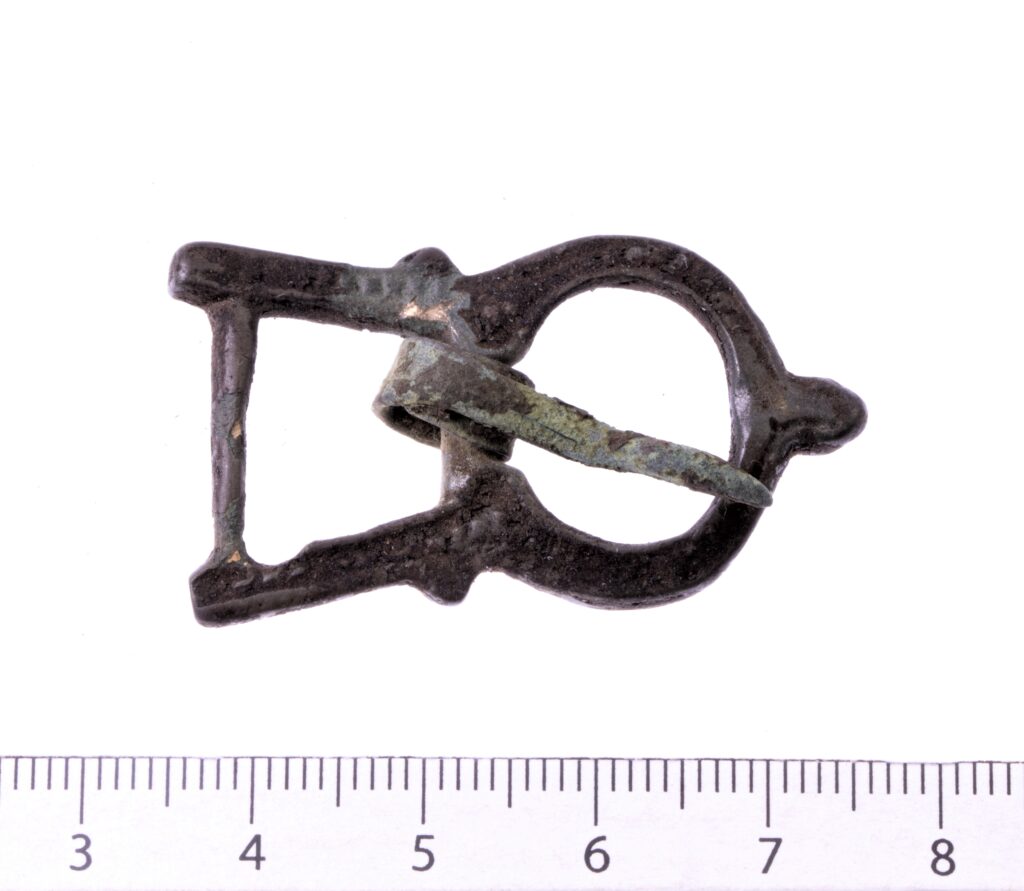
Photo: Jaana Ratas.
Gotlandic-Baltic type buckle, silver or lead.
Literature:
Mägi, M. 2002. At the Crossroads of Space and Time. Graves, Changing Society and Ideology on Saaremaa (Ösel), 9th–13th centuries AD. Tallinn: Ajaloo Instituut, Tallinn/Center of Baltic Studies, Gotland, p. 97. Read the book: here. Look at the drawings of the archaeological excavations: here.
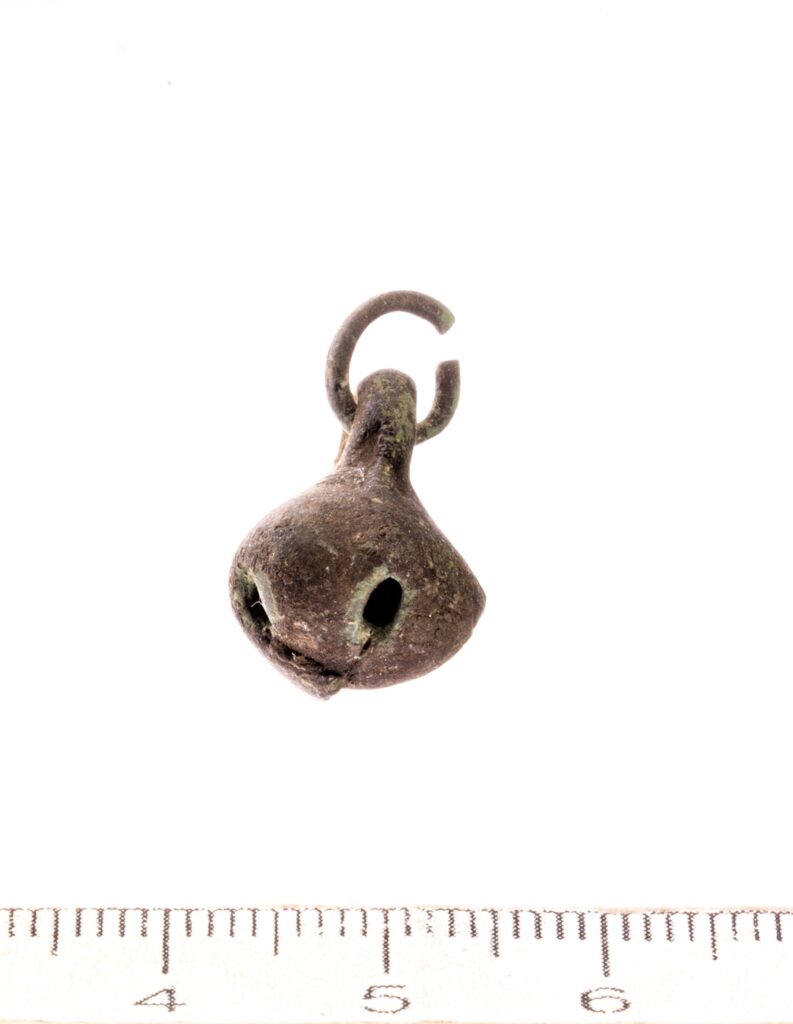
Photo: Jaana Ratas.
Bell, bronze.
Mullutu
Knife handle of bronze and iron. On facets text DAAM-+G-LE, and MÆ-N-EB-TS.
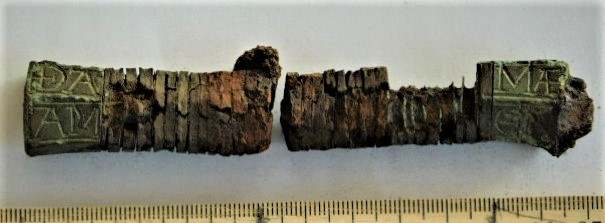

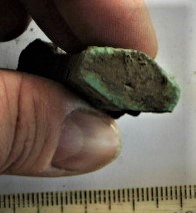
Knife handle of bronze and iron. On facets text DAAM-+G-LE, and MÆ-N-EB-TS.
Mullutu
Drawshave, iron. Similar ones are known e.g. from Kirimäe deposit. The type can be dated to a long period.
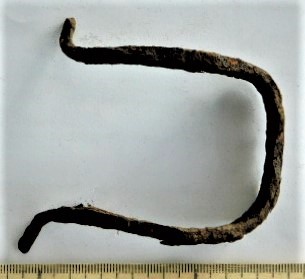
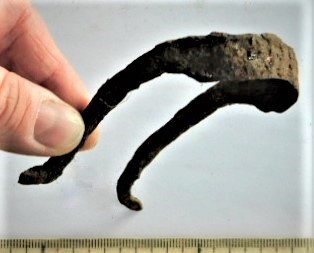
Drawshave, iron. Similar ones are known e.g. from Kirimäe deposit. The type can be dated to a long period.
Read more:
Tvauri, A. 2012. The Migration Period, Pre-Viking Age, and Viking Age in Estonia. (Estonian Archaeology, 4). Tartu University Press, Tartu, 127, fig. 83.
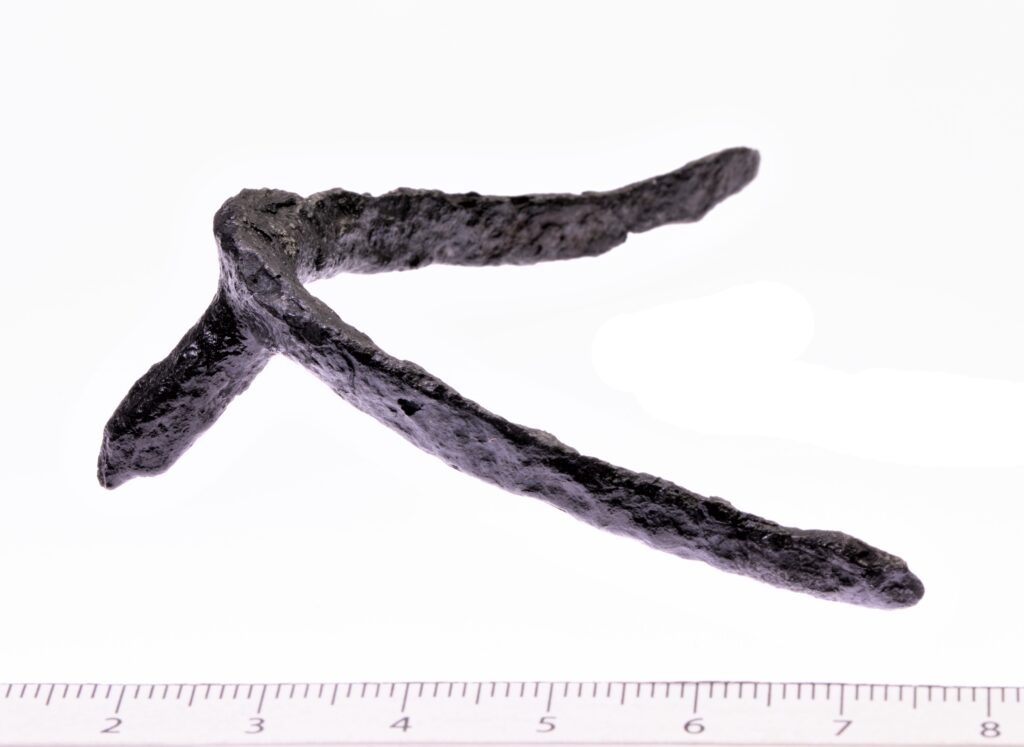
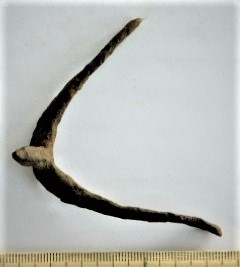
First photo: Jaana Ratas.
Spur, iron.
Literature
Tvauri, A. 2012. The Migration Period, Pre-Viking Age, and Viking Age in Estonia. (Estonian Archaeology, 4). Tartu University Press, Tartu, 186.
Mullutu
Buckle, iron. Probably from horse bridle.
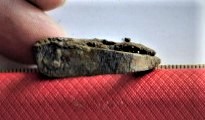
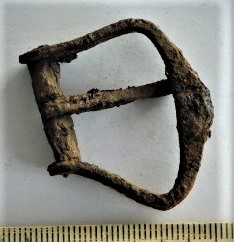
Buckle, iron. Probably from horse bridle.
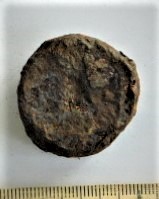
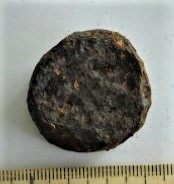
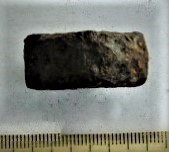
Disc, iron.
Mullutu
Stirrup, iron with silver plating. Similar stirrups are known e g from Birka and Hedeby, antoher specimen is also known from Saaremaa.
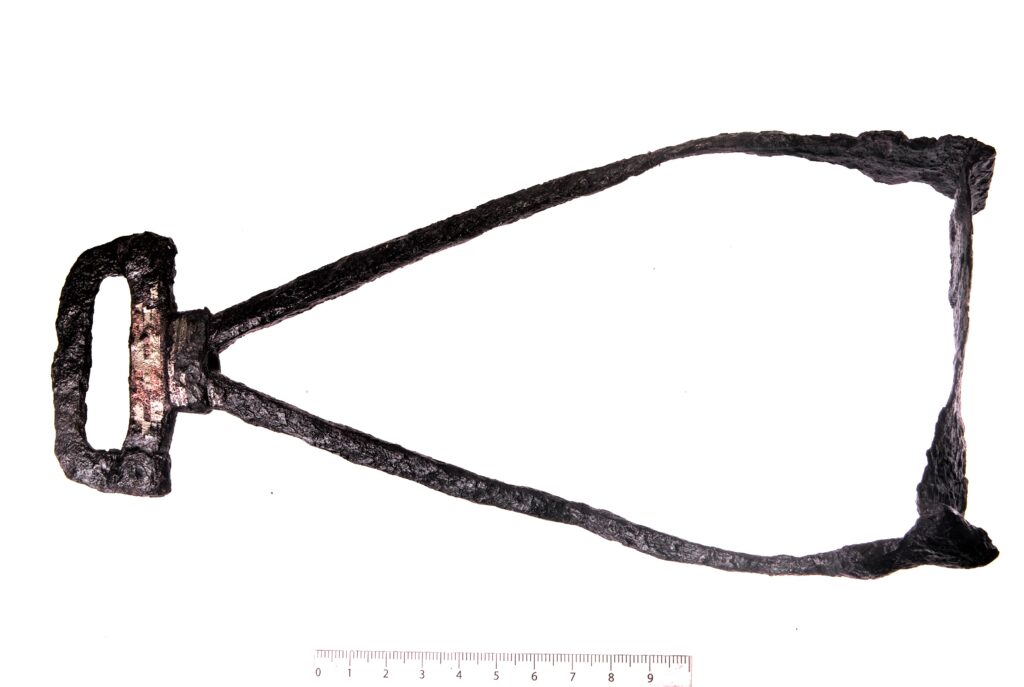
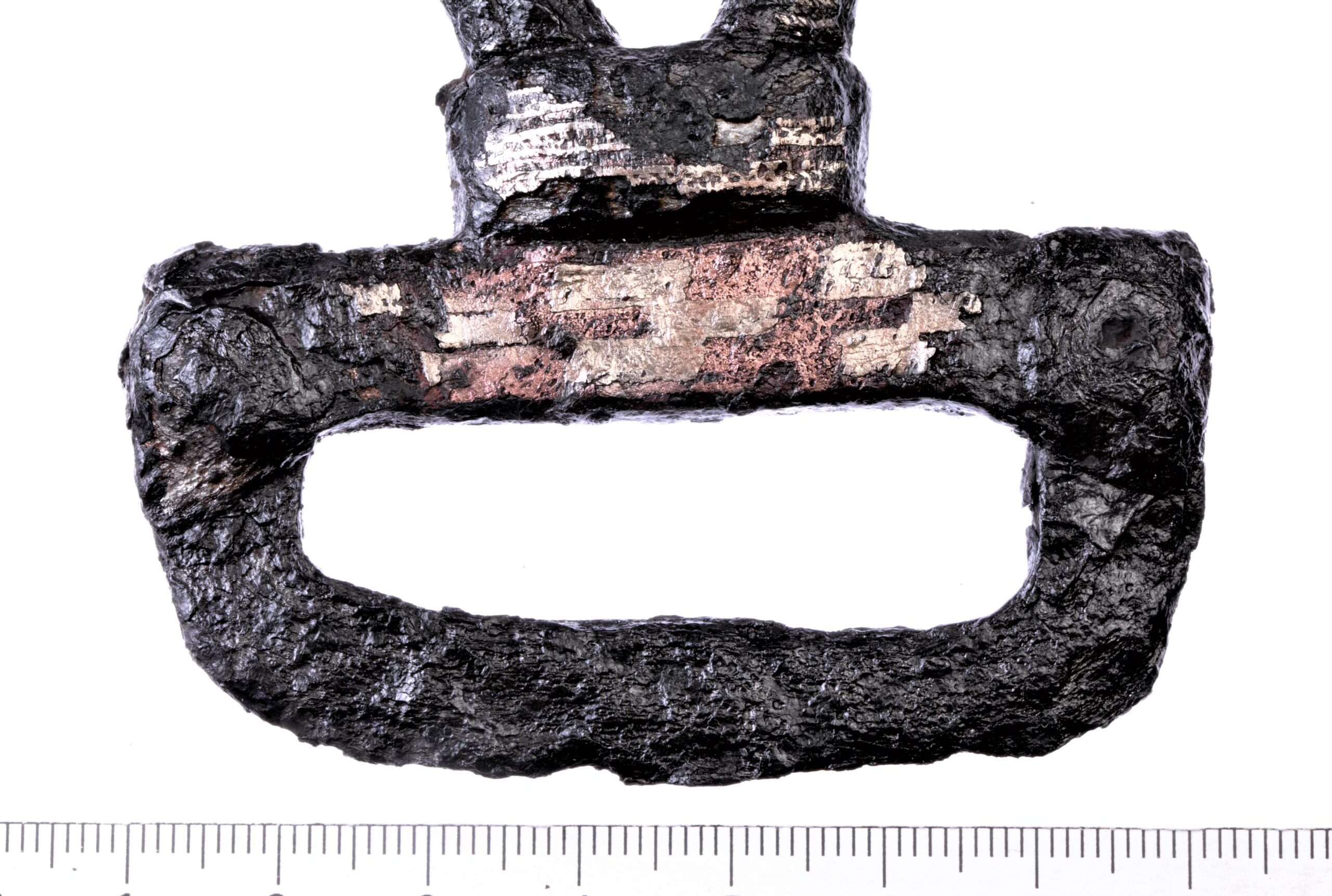
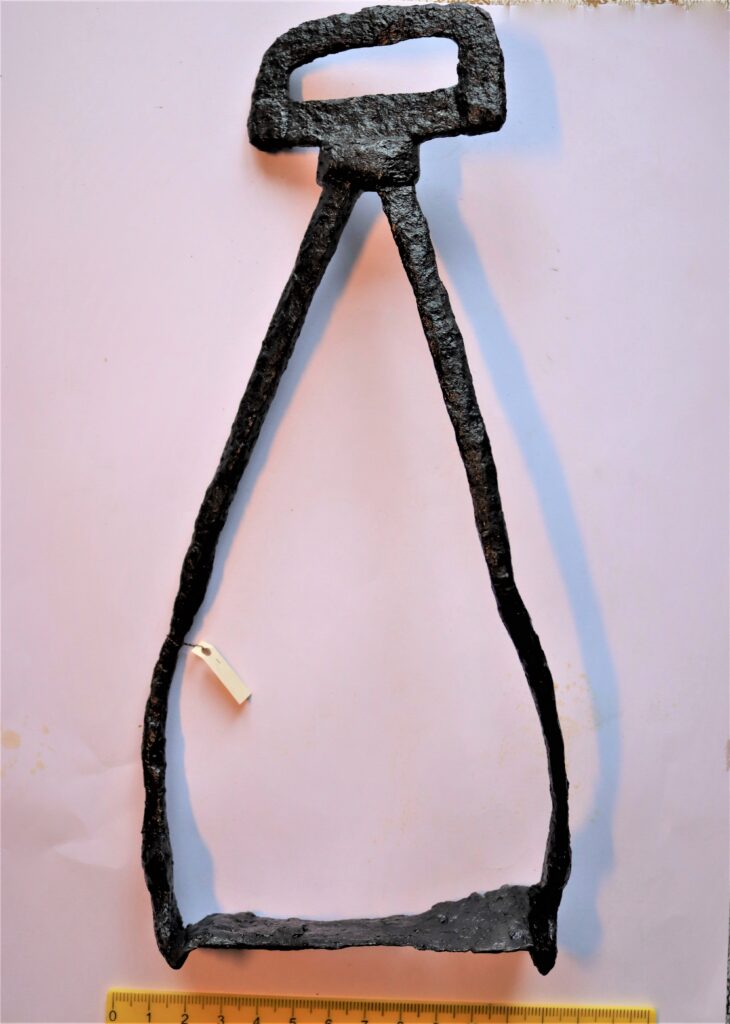
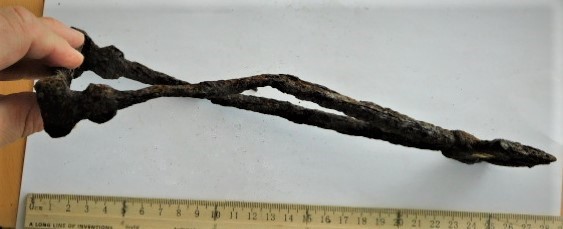
First two photos: Jaana Ratas.
Stirrup, iron with silver plating. Similar stirrups are known e g from Birka (Arbman 1940, eriti Taf. 35: 1-2) and Hedeby (Schiezel 2014, 582), antoher specimen is also known from Saaremaa (AI K 89: 28).
Literature:
Arbman, H. 1940. Birka I. Die Gräber. Tafeln. Stockholm, Vitterhets Historie och Antikvitets Akademien, esp. Taf. 35: 1-2.
Schiezel, K. 2014. Spurensuche Haithabu. Dokumentation und Chronik 1963-2013. Schleswig, Wachholtz, 582.
Mullutu
Hoe, iron. Such hoes are widespread burial goods e g in Simigallian 5th-10th century inhumations. Some are also registered in inland Estonia.
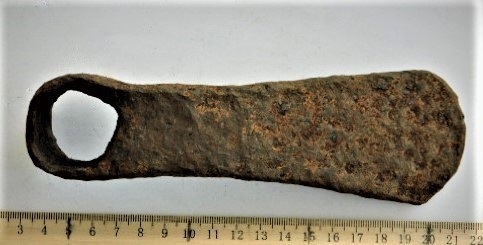
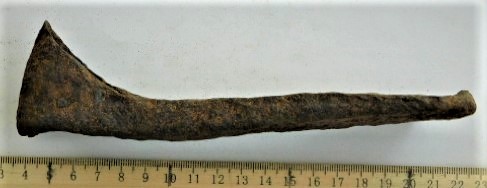
Hoe, iron. Such hoes are widespread burial goods e g in Simigallian 5th-10th century inhumations (The Semigallians, 133). Some are also registered in inland Estonia (Tvauri 2014, 89).
Literature:
Griciuvienė, E. (prepared by). 2005. Žiemgaliai. Baltų archeologijos paroda. Katalogas. The Semigallians. Baltic Archaeological Exhibition. Catalogue. Lietuvos nacionalis muziejus, Latvijas Vēstures muzejs, Vilnius – Riga, 133.
Tvauri, A. 2012. The Migration Period, Pre-Viking Age, and Viking Age in Estonia. (Estonian Archaeology, 4). Tartu University Press, Tartu, 99.
The negative value refers to time Before Christ.

